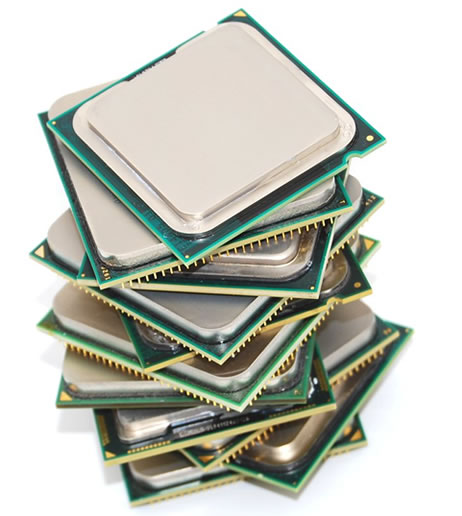Building your own computer can be very time consuming and rewarding at the same time. While piecing the new hardware together is usually a relatively easy task, picking out the right components in the first place is what can make it more troublesome (that's where our PC buying guide comes in handy - but please, read on).
The first component that must be decided upon before any build takes place is the processor, as this will dictate which motherboard can be used and often the memory type. As one of the more expensive components you must choose wisely, so think about the purpose of your build and budget. Popular CPU choices often range between $100 and $200, and surprisingly in this limited price range consumers will find a huge number of AMD and Intel offerings.
In this price bracket processors can be found operating between 2.66GHz and 3.40GHz, but the differences between these go well beyond mere frequencies. The number of cores also varies with dual-core, triple-core and even quad-core processors available within this range. Other factors play an important role as well, such as cache and the thermal design power rating.

With so many choices at your disposal, we understand it's hard not to become overwhelmed. Therefore we have taken a dozen processors priced within the $100 - $200 price range and pitted them against each other, so you can draw clear conclusions on what will suit you the best.
Keep in mind that not every processor family is being represented by its flagship model. Rather, we have taken what we feel is the best value processor for that particular series. For example, the Core i5 661 falls within our target with an asking price of $200, but instead we have gone with the Core i5 650 because we feel it is a better value option.
Towards the end of the testing phase we have also added a segment that compares all 12 processors on a clock-for-clock basis. This comparison of architectures aims to remove the operating frequency impact on performance and allows us to show you exactly how these CPUs perform side-by-side. This is particularly useful for overclockers, showing just how much difference in performance there might be between two particular processors once overclocked to a certain frequency.
Besides the processors themselves, we will be also taking under consideration the value and performance differences between the platforms used, so motherboards and chipsets will be factored into the whole equation. And now, let's meet the contenders both from the green and blue camps...
